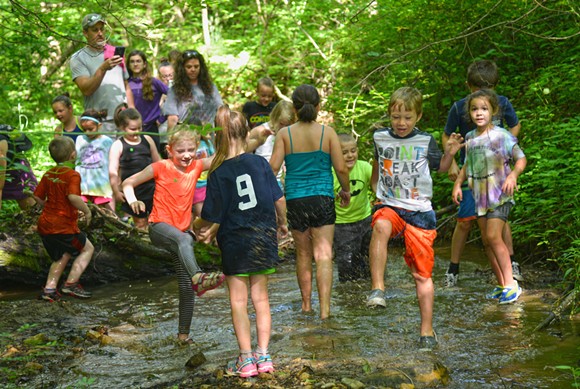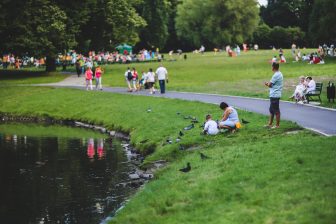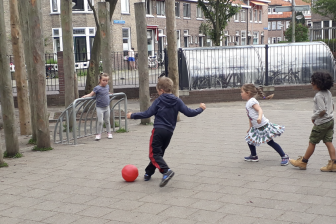
A new park for connecting kids to nature: the children of indiana nature park
The Nature Conservancy (TNC) partnered with the Indiana Department of Natural Resources, Cope Environmental Center and the Indiana Department of Education to create the Children of Indiana Nature Park in celebration of the Hoosier bicentennial.
According to Laura Sertic, the Community Education and Outreach GLOBE Intern at TNC, it’s the first park in the country of its kind with the goal of connecting Hoosier children to nature. Any K-12 student in Indiana is able to visit the Children of Indiana Nature Park’s website to download a free deed with GPS coordinates to a specific area of the Children of Indiana Nature Park. Whether the student wants to visit their spot online or in person, they’re able to see what’s living on their plot of land and the stewardship that occurs there as well.
The Children of Indiana Nature Park is located in Centerville, Ind. But Sertic emphasized that if the Centerville park is too far, the Bicentennial Nature Center Network — a group of nature centers that partnered with the park — is able to give access to any of the curriculum from the Children of Indiana Nature Park’s website, as well as other park locations, so no child will be more than an hour away from a park.
The park is divided into different sections, each section designated to a different Indiana county.
“I think a lot of the work and preparing for it (the park) was getting the partners together who could help make the purchase happen, help provide the educational components,” said Melissa Moran, the Community Outreach Coordinator for TNC. “We needed someone to design the website … and to make the connections both to conservation and to education.”
In the last 200 years, the number of people who have grown up around nature has dropped over 40 percent, according to Moran.
“There are just fewer and fewer people who have that sort of intuitive connection with the outdoor world,” Moran said. “They’re living more in the urban areas now.”
Moran also added that today’s children are in an electronic age, spending more than 50 hours a week on their electronic devices. That’s more time than a full-time job and four times the amount recommended by pediatricians.
“In order to care about something, you need to know about it first, you need to know what it is,” Moran said. “Kids can recognize more than 1,000 corporate logos but only know a few native plants and animal species.”
TNC tested this theory out on a group of 30 kids who came to their office. On a screen with logos blurred as the background image behind a clear photo of a flower, kids immediately began naming off all of the logos. Sertic said that it took four or five kids naming labels before one mentioned the flower.
“It’s making that personal connection into knowing what it is and being able to care about it,” Moran said. “We’re thinking about who the next generation of conservationists is. Do you have that personal connection to plants and animals and understand how the whole network of species is important in conservation?”
Research shows the benefits of being integrated with nature. Children in 2016 have a higher incidence of near- sightedness because they’re not outside exercising. The lack of exposure to dirt and soil increases the chance of allergies and a lower immune system. And in adults who spend at least 30 minutes a week outside in a green space, there’s a decrease in high blood pressure and depression.
“It’s a great place to learn to be a scientist or more inquisitive,” Moran said. “There’s lots of data saying that kids really benefit from [a] well-being and health standpoint from being in nature.”
For the younger generation of children, and the next generation of conservationists, an encouragement to be integrated with nature is crucial from parents, grandparents, teachers, etc. Not only are the health benefits relevant, but it has also been shown that students who spend more time in nature are better learners.
“Parents shouldn’t be intimidated if they’re not a biologist or a scientist themselves,” Moran said. “It’s just the process of helping their children to learn about it and to ask the questions and help them discover what it is. The website is a tool that can help do that and the information is there. You can just … explore it together.”
“You can learn together,” Sertic added.
“It’s a more meaningful experience … for the young person if their parent or grandparent or teacher, somebody that they look up to and trust, is spending that time with them to learn about nature, because it shows the child that it’s important,” Moran said.
Author: Katja Krasnovsky
Photo Credit: Novu




